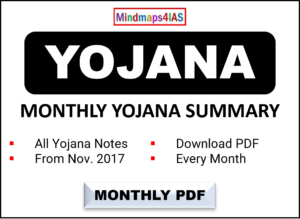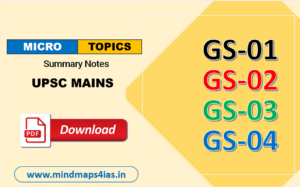- Source – The Hindu
- Link – https://www.thehindu.com/news/national/does-inequality-lead-to-growth-explained/article68244378.ece
- Syllabus – GS Paper 03
- Topic – Indian Economy and issues relating to Planning, Mobilization of Resources, Growth, Development and Employment.
What is the issue?
The leaders of major political parties have sparked discussions on inequality. Researchers from the Paris School of Economics have highlighted that inequality in modern India exceeds that of colonial times.
What is the multi-dimensional impact of inequality?
- Political Impact:
- Inequality poses a significant challenge to democracy. While some argue that a degree of inequality can spur entrepreneurship and subsequently create more jobs and enhance welfare, it also exacerbates disparities in political power.
- Unequal distribution of wealth can concentrate resources and power among a small group, limiting democratic representation and influencing policy disproportionately.
- Economic Effects of Inequality:
- Inequality concentrates resources and power among a small elite, often leading to monopolistic practices that harm consumption, welfare, and economic growth.
- Billionaires accrue wealth through monopolies, allowing them to set prices above production costs, which reduces real wages and purchasing power for the broader population.
- Monopolies contribute to phenomena like “greedflation,” where high inflation rates persist despite sluggish economic growth, particularly evident in developed economies.
- In monopolistic markets, firms produce less to maximize profit, resulting in lower output, investment, and overall economic welfare compared to competitive markets.
- Impact on Economic growth
- In an unequal economy, reduced consumption power among the majority dampens investment effects on economic growth, hindering broader prosperity and the multiplier effect.
How Redistribution and Growth Can Work Together?
- Wealth Taxes and Redistribution: Taxing wealth and redistributing it can spur economic growth by boosting incomes and consumption among lower and middle-income groups, who tend to spend more.
- Multiplier Effect: Redistribution enhances the multiplier effect, where initial investment increases lead to greater overall income and consumption growth. This cycle of higher incomes stimulates more purchases, driving economic activity and expansion.
- Investment and Profit Expectations: Taxing wealth doesn’t necessarily dampen investment, as investment decisions hinge more on future profit prospects than current wealth levels.
- Creation of New Entrepreneurs: Redistribution supports new entrepreneurs by providing financial resources and reducing reliance on wage jobs, fostering innovation and competition that contribute to economic growth.
- Curtailing Monopolies: By reducing monopolistic power through redistribution and other policies, prices can decrease and real wages rise. Increased purchasing power boosts demand, prompting higher investment and broader economic growth.
Addressing inequality through redistribution promotes inclusive growth, essential for achieving SDG Goal 10 (Reduced Inequalities).
















